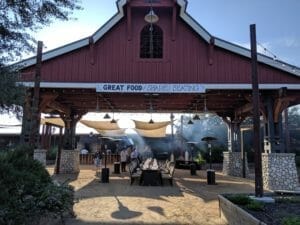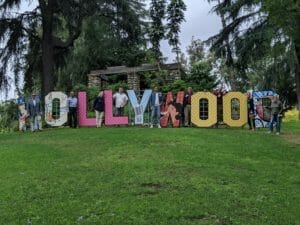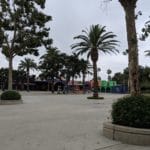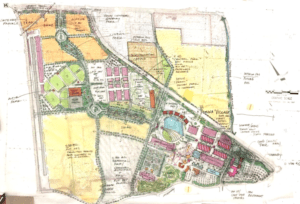Top Story
Location: Pomona, CA
Sponsor: Fairplex
Subject Area: Fairground Development
Panel Chair: Glenda Hood, President, Hood Partners LLC – Orlando, FL
Background and Panel Assignment
Under new management, the nearly 100-year-old Fairplex, a 487-acre site in Inland Empire that hosts the Los Angeles County Fair, is poised for a transformation to meet changing demographics and future market challenges. The site, which is mostly owned by Los Angeles County and straddles the cities of Pomona and La Verne, hosts about 1.2 million fairgoers and provides a variety of other events that bring more than 3 million visitors to Fairplex annually.
Fairplex challenges include poor visual interest and connectivity with surrounding neighborhoods, as well as best and highest use of land, existing assets, infrastructure and resources.
 The Fairplex complex includes: expansive space — the site is among largest fairgrounds nationally and has considerable onsite assets and infrastructure, including 325,000 square feet of historical, WPA-built, Quonset hut-style buildings; museums; a hotel and conference center; an onsite farm that serves the hotel’s farm-to-table restaurants; a forested parcel; grandstand; drag strip; child development center; occupational training facilities for high school students; sports fields and a variety of exhibition buildings and animal barns that could be repurposed for other uses.
The Fairplex complex includes: expansive space — the site is among largest fairgrounds nationally and has considerable onsite assets and infrastructure, including 325,000 square feet of historical, WPA-built, Quonset hut-style buildings; museums; a hotel and conference center; an onsite farm that serves the hotel’s farm-to-table restaurants; a forested parcel; grandstand; drag strip; child development center; occupational training facilities for high school students; sports fields and a variety of exhibition buildings and animal barns that could be repurposed for other uses.
Urban Land Institute was invited to reimagine this site’s potential as an economic engine and year-round destination and to identify opportunities for:
- Improving land use, sustainability and utilization of existing assets
- Creating economic impact
- Improving the flow of visitors from future mass transit resources and within the Fairplex complex
- Enhancing programming and visitor experience with new landscaping and experiential opportunities
- Generating additional revenue
- Creating mutually beneficial partnerships with community businesses and organizations
- Connecting with and engaging the local community
 The ULI Advisory Services Panel spent five days touring the site and surrounding community and interviewed more than 80 Fairplex stakeholders, which included community members, public officials, representatives from community businesses and organizations, and Fairplex staff, board, association members and vendors.
The ULI Advisory Services Panel spent five days touring the site and surrounding community and interviewed more than 80 Fairplex stakeholders, which included community members, public officials, representatives from community businesses and organizations, and Fairplex staff, board, association members and vendors.
Interviews generated a variety of wants, among which were the creation of a live-work-play environment with greenways and open space, technology upgrades to attract younger generations, expansion of farm and job training programs, expansion of the child development center, development of attainable and multigenerational housing, and reorientation of the site to improve access to the Gold Line light-rail, which is scheduled for completion in 2025.
Summary of Recommendations
- Solidify Fairplex’s identity, including possibly rebranding to update the organization’s image.
- Incorporate the history of the fair experience into all aspects of design, use, and year-round programming.
- Emphasize the role of the community with civic engagement, connection of the site to surrounding neighborhoods, and creation of onsite experiences, amenities, events and services that engage community members.
- Create an imaginative and sustainable framework plan that includes the creation of a new campus gateway from the proposed Gold Line, a grid of complete streets, a way-finding system, and a green artery that connects Fairplex neighborhoods and anchors of activity, which include both existing uses and the opportunity to develop and curate future uses.
- Provide connectivity of land uses and transportation, including rail, bus, ride-sharing, and bike and hiking trails.
- Implement functional and flexible redevelopment and other changes in phases over time, identifying short-, medium- and long-term priorities and opportunities, with an eye to funding sources, market demand and cycles, and community goodwill.
- Implement concepts that support model partnerships and sustainability.
- Evaluate the governance structure of Fairplex to ensure that the right players with the needed skillsets are in place. This includes creating a separate development committee to manage the future visioning process and planning.
- Build on the existing culture of strong community engagement to continue laying the groundwork for transformation.
- Create long-term value and support for building and continuing partnerships
- In the short-term, develop a transit-oriented development on an 11.7-acre site on the north side of the campus adjacent to the proposed Gold Line; over the long-term, redevelop parking lots as the need for parking decreases.
- Improve financial sustainability by identifying and growing sources of a secure, stable income base.
- Make Fairplex a model of environmental sustainability through implementing best practices, such as preparing a sustainability plan; committing to a standard of LEED sustainability for new buildings and renovations; and focusing on sustainability and technology as a centerpiece of displays, education, design and operations.

